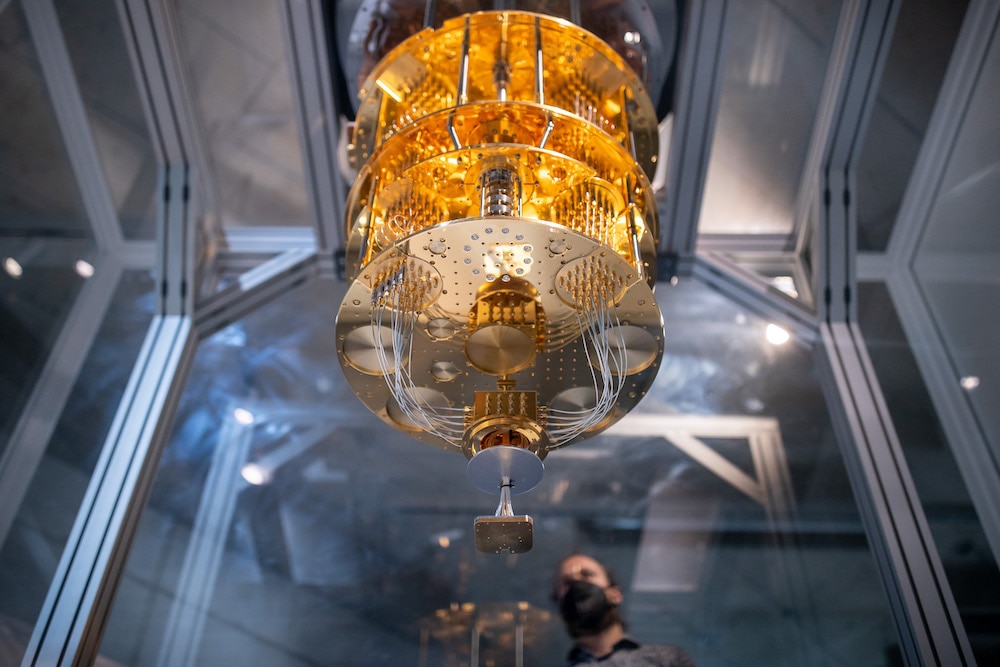Create a free profile to get unlimited access to exclusive videos, sweepstakes, and more!
Gold nanoantenna, the next step in quantum superspy communication
We promise this is real and not the plot of a spy movie starring Daniel Craig.

Modern computers have served us well over the last several decades, and the improvements in size and capability have been impressive. Still, considering everything we’re able to do with our desktops, laptops, and smartphones, the underlying process of computers hasn’t changed since their inception.
Contemporary computers process data using bits, which code for a binary state: on or off, up or down, 1 or 0. This binary processing has certain limitations that we don’t notice in our every day usage, but which become a problem when trying to solve complex problems.
Quantum computers could solve incredibly difficult computations — the kind that would take traditional computers hundreds or thousands of years — much more quickly. But quantum computers are finicky and have the potential for a lot of noise in the data.
A recent paper by scientists at Osaka University and Ruhr-Universität Bochum seeks to solve one of these problems by improving the way data transfers between photons and electrons, and it involves tiny gold antennas. Their findings were recently published in the journal Applied Physics Express.
If we think of computing as navigating a labyrinth, classical computers have to try each path one at a time until a solution is found. If the labyrinth is sufficiently big and complex, that means a computer might take longer than is reasonable to find a solution, making a problem essentially unsolvable. The nature of quantum computing gives them an advantage for these sorts of problems.
Instead of using bits which are capable of only two states, quantum computers use qubits, which utilize quantum superposition of an unmeasured particle. In this way, a qubit can have two states at the same time. It doesn’t seem like a huge advance, but it scales exponentially. A quantum computer with two qubits can run four states at once. With three qubits, you can have eight states, and so on. By the time you reach 20 qubits, you have a system capable of storing more than a million possible values. Going back to our labyrinth, that means quantum computers can run many more possible solutions all at the same time, vastly decreasing the amount of time it takes to solve big problems.
In order for all of this to work, however, you have to be able to maintain superposition of qubits, which has a whole host of challenges including interference from the outside world. It makes the process messy and prone to noise in the data. One way to do this is by transferring the polarization of a photon to the spin of an electron inside a quantum dot — the quantum computing equivalent of a semiconductor. Such a system would allow for totally secure communication at a distance because of something known as the no-cloning theorem.
The no-cloning theorem states it is impossible to create a copy of an arbitrary unknown quantum state. In essence, quantum communications couldn’t be tapped unless the person spying knows the quantum state and can duplicate it.
The trouble with this process of communication is that transferring the state of a photon to an electron by a quantum computer is inefficient. Currently, the conversion efficiency is less than a thousandth of a percent. The challenge is largely due to the size of the aperture of a quantum dot compared to the incident beam used to transmit that data. You’re basically trying to shove a watermelon through a keyhole. It doesn’t work very well.
Scientists were able to make the incident beam more closely match the size of the dot aperture and increase photon absorption using a specially designed gold nanoantenna. The device is composed of concentric circles of gold which allow for the focusing of light onto a single quantum dot. They were able to increase the amount of absorption by a factor of 9, which is considerably lower than they expected from simulations. When the process was simulated, they showed an improvement of 25 times compared to absorption without the antenna.
The variance could be explained by misalignment within the machine or imperfections in the fabrication of the antenna, something future experiments should reveal.
All told, it means quantum computers just got a little bit more efficient and some of the noise inherent in the system has been reduced by allowing the states of photos to be transferred to electrons through a beam onto a quantum dot, which all sounds like a bunch of nonsense written by science fiction authors imagining how the future might look. Which is pretty cool.
Given the already small efficiency rate, even this level of improvement leaves a lot of room to grow. Efficiency is still well below even one percent, but it serves as a small step along the way toward the quantum leaps we’ll need for the next revolution in computing and communication.


























